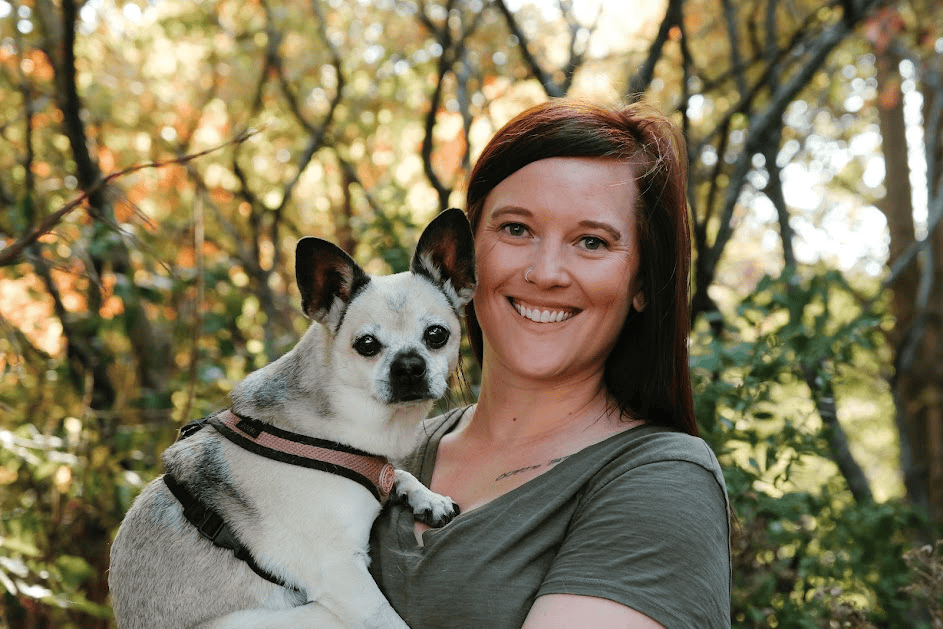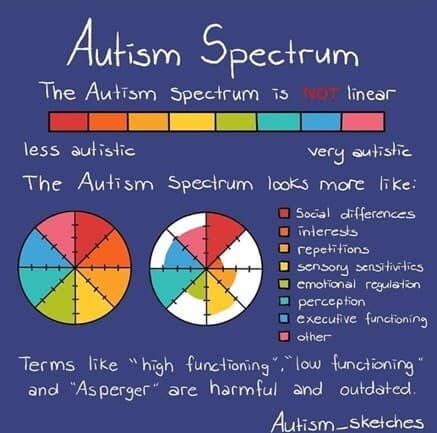April has been known to many as “Autism Awareness Month” and in recent years was changed to “Autism Acceptance Month”. While I think it is wonderful we are at a place of acceptance, I think it is important we don’t forget and move past the awareness part.
I am a late diagnosed ADHD/Autistic individual, an AuDHD, if you will. Years ago, when I started working in this field and learning more about autism and neurodiversity, I began to question more about myself and my own behaviors. I would read about a certain trait, see one of my clients engaging in a behavior (maladaptive or preferred), or write something into a treatment plan and the whole time think to myself, “Wait, I do this. This is something I struggle with, how am I going to teach this skill to someone else?”

Here enters the issue on the awareness part. The problem with thinking we have nailed down autism awareness and can move into acceptance is that we have not fully been made aware of how autism looks across the spectrum. When people think of autism, they typically think of little kids who are maybe non-vocal or have limited communication skills or rigidity and repetitive behaviors like to line things up or have a special interest in certain toys. This may be how one autistic person presents but the problem is, this is not how every autistic person presents. Our society isn’t aware of all the different ways neurodiverse individuals can look, act, and learn, so how can we accept the things we aren’t even aware of? Because of the lack of awareness for girls with autism, a lot of females go undiagnosed and do not get the help they need. Because of the lack of awareness for individuals with lower support needs, they also tend to go undiagnosed or unnoticed and they also do not get the help they need.
My sister and I look back on all the things I did as a child and laugh about how obvious it was that I was autistic. But “back in my day”, parents were not as aware of these traits and diagnoses and were not getting their children evaluated. I grew up learning how to mask and fit in and thinking the struggles I was facing were normal and I didn’t need any help or accommodations. For example, I did all my undergraduate and graduate schooling online because I could not take in information by sitting and listening to it in person. I needed to be able to read it, visualize it, and see the words. Bringing this story back to the beginning, as I grew older and realized I was making the same accommodations for myself as I was for the clients I supported and had so many other things in common, I wanted to dig deeper and find my own awareness.
After being diagnosed, it still took some time to really be aware of what that meant to me and for me, and even longer for me to fully accept. I work in this field, I teach others how to work with people who are neurodiverse, but it is still hard for me to fully acknowledge and embrace that I am autistic. It is embarrassing to admit, but because I don’t look and fit the “stereotypical” autistic person, even I don’t think I should be labeled as autistic, even though I know how I am feeling and struggling on the inside. As I learn how to lower the mask, I am learning more about myself and learning what being autistic means to me and learning how to ask for help. Autism Awareness month and Autism Acceptance month, to me, means being aware of my own neurodiversity, my own needs, and being able to accept me for me.
During Autism Acceptance month, I think it’s important to also keep in mind that we are not just accepting people who we think “fit the bill”. We are accepting all people, no matter their support needs. We need to be aware that autism comes in all different levels, genders, support needs, sensory issues, etc. The autism spectrum is a pie chart with different sized pieces being taken out of different areas; it is not a line of more or less autistic. When your friend or coworkers approaches you and is asking for help, clarification, or an accommodation, don’t brush them off. Don’t think they are being lazy, or greedy, or selfish. More than likely, they are asking for this help because they need it and are finally strong enough to ask a trusted person in how to get it. I know it has been a struggle for me to ask for help and an even bigger struggle in getting people to believe that I actually need it.

About the Author
Alyssa Saterfield received her B.A. in Elementary Education from Trinity Christian College and her M.S. in Applied Behavior Analysis from The Chicago School of Professional Psychology. Alyssa started her “ABA career” working as a Certified Nursing Assistant (CNA) in a rehab center for adults with traumatic brain injuries. Since that time, she has also worked as a paraprofessional in a school for children with disabilities, taught students in general and special education (transitional age) settings, worked as a case manager for adults with disabilities, worked as a Level II Behavior Therapist for adults with disabilities in day program and group home settings, and worked in an ABA clinic for children. While working with the adult population, Alyssa was certified as a Safety Care trainer around 2015 and continued to be a trainer until she was hired as a Master Trainer at QBS in July 2021.
 By using our site, you consent to our use of cookies to enhance functionality and analyze site performance.
By using our site, you consent to our use of cookies to enhance functionality and analyze site performance.